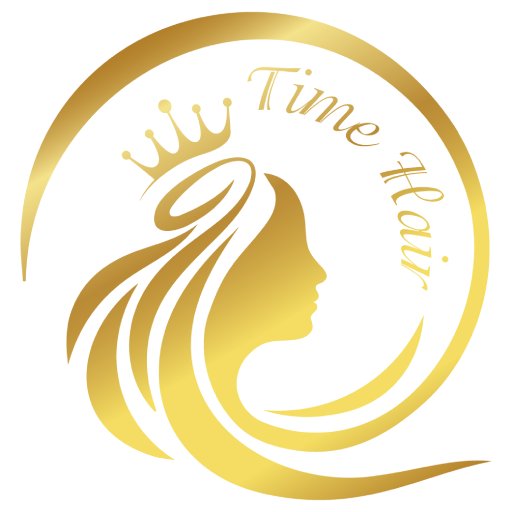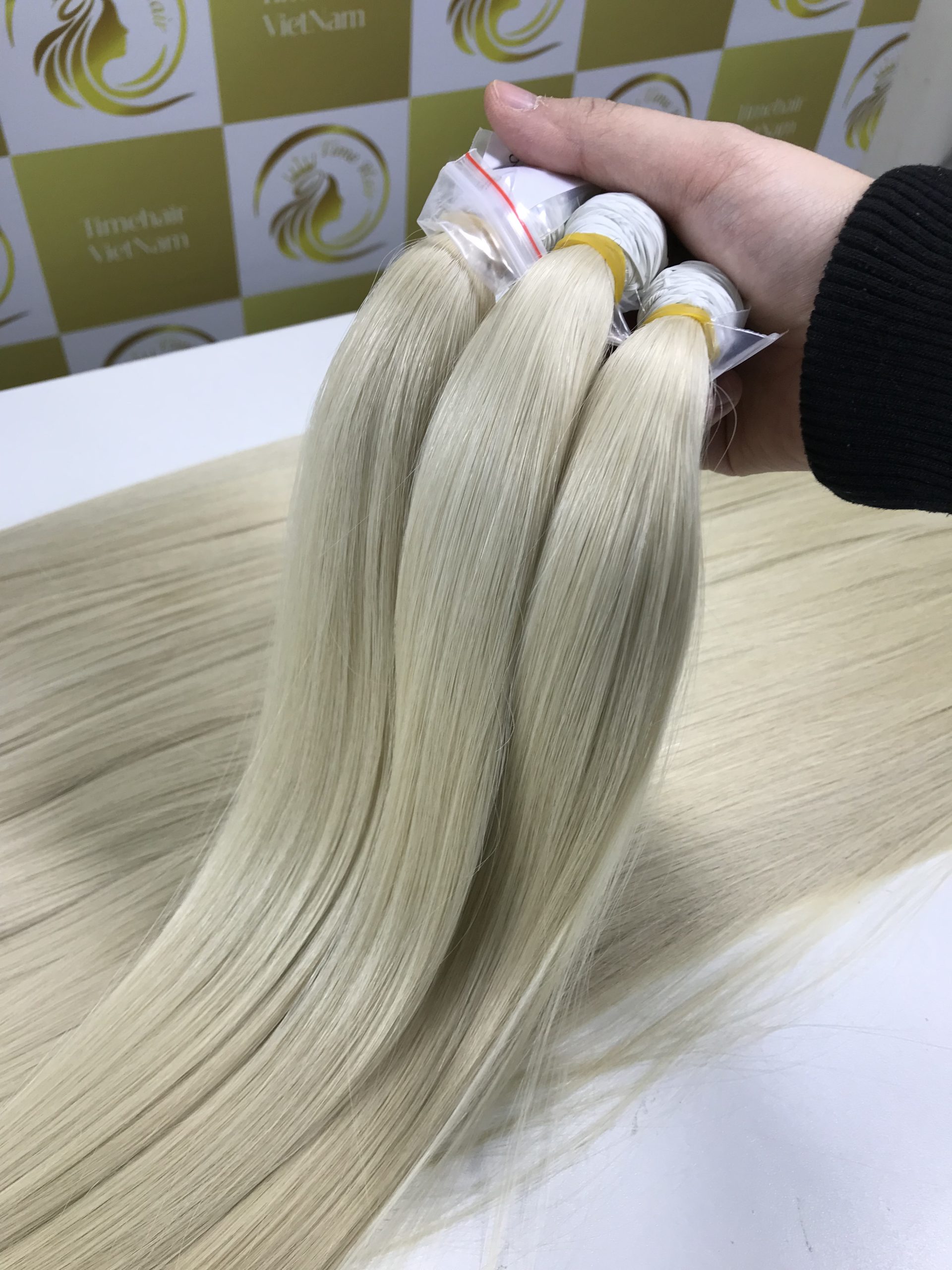
How to Bleach Vietnamese Hair Extensions at Home: A Complete Step-by-Step Tutorial
Renowned for their premium quality, strength, and versatility, Vietnamese hair extensions have become a trusted favorite in the beauty world. Their resilience and natural thickness make them particularly well-suited for color treatments—especially bleaching. Compared to many other hair extension types, Vietnamese hair maintains its softness and structure even after undergoing chemical processes, provided it is treated with proper care.
At TimeHair Vietnam, we know how important it is to personalize your look. While bleaching your Vietnamese hair extensions at home can be a budget-friendly way to achieve your desired style, it’s crucial to approach the process with precision and the right techniques to avoid unnecessary damage.
This detailed guide is designed to equip you with everything you need to know—from prep to aftercare—so you can bleach your Vietnamese hair extensions with confidence and achieve salon-worthy results at home.
I. What Sets Vietnamese Hair Extensions Apart
Before starting the bleaching process, it’s important to understand why Vietnamese hair is so highly valued—especially for color treatments.
1. Unique Qualities of Vietnamese Hair
Vietnamese hair is collected from rural regions of Vietnam, where donors often follow traditional, natural haircare routines. This results in hair that is:
- Naturally strong with healthy, intact cuticles that handle chemical treatments well
- Thick and slightly coarse in texture, allowing it to absorb and hold color evenly
- Virgin and untreated—free from synthetic or harsh chemical exposure
- Rich in natural oils, which help protect the hair during chemical procedures
- Long-lasting and durable, especially when maintained properly
These qualities make Vietnamese hair extensions a premium option for color customization. They offer a reliable base for bleaching, retaining their shine, bounce, and smoothness when handled with care.
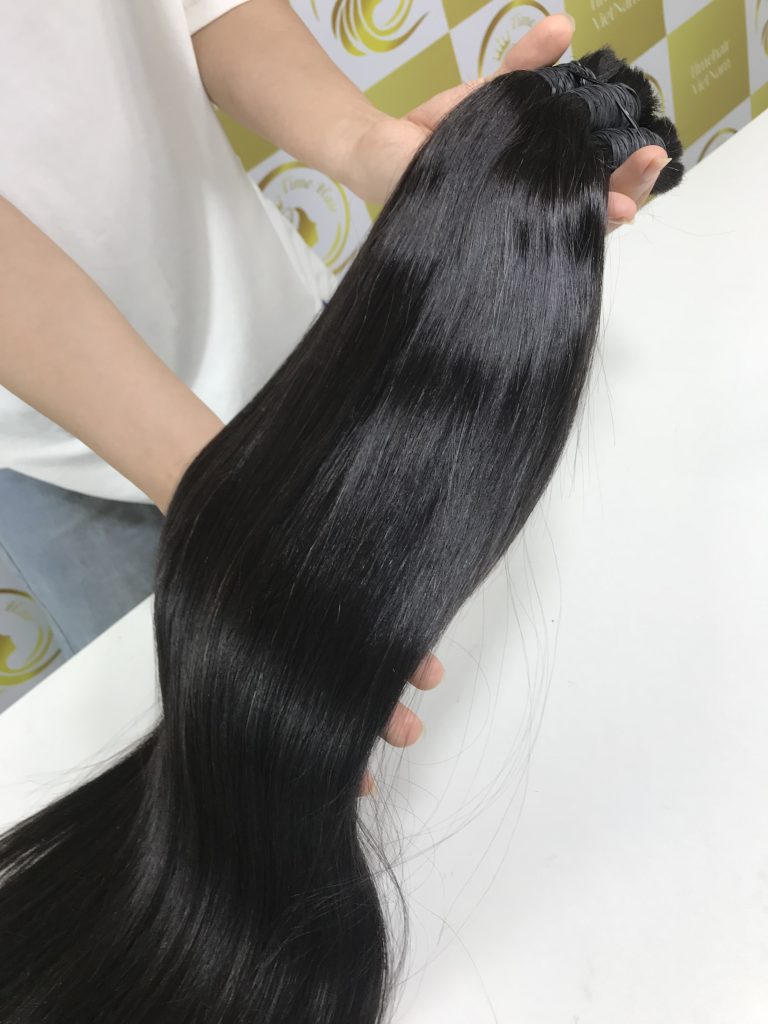
2. Why Vietnamese Hair Extensions Are Ideal for Bleaching
When it comes to bleaching, not all hair extensions are created equal—and Vietnamese hair extensions stand out for several compelling reasons:
- Their natural strength makes them more resilient to chemical treatments.
- High protein levels in the hair help it resist breakage and maintain integrity.
- A thick, protective cuticle layer safeguards the inner hair shaft during processing.
- Vietnamese hair absorbs and retains color evenly, making it perfect for custom dye jobs.
- With the right care, the color results are long-lasting and vibrant.
At TimeHair Vietnam, we are committed to quality. All our extensions are made from ethically sourced Vietnamese hair, collected from donors who follow traditional, natural haircare practices. The result? Luxuriously strong, healthy hair that’s ideal for color transformations—especially bleaching.
3. Getting Ready to Bleach: What You’ll Need
A successful bleaching process starts with good preparation. Having the right tools and setting up your workspace properly will make the experience smoother and more effective.
Essential Tools and Products:
- Professional bleach powder and 30–40 volume developer
- Plastic mixing bowl (avoid using metal)
- Applicator brush for even bleach distribution
- Protective gloves
- Hair clips to section off the extensions
- Old towels or plastic sheeting to protect your workspace
- Toner (to eliminate unwanted brassy tones)
- Purple shampoo and conditioner
- Wide-tooth comb for gentle detangling
Set up your station in a well-ventilated area with strong lighting, preferably close to a sink. Make sure all tools are within reach, and wear old clothing in case of spills or splashes.
4. Perform a Strand Test First
Before committing to the full bleaching process, it’s essential to do a strand test. This simple but crucial step helps you determine:
- How the hair reacts to bleach
- The approximate time needed to reach your desired shade
- Whether the hair remains strong and healthy after bleaching
- If a toner will be needed to refine the color
Choose a small, hidden section of the extensions, apply the bleach mixture, and monitor the results carefully. This will give you a clear idea of what to expect and help prevent overprocessing or damage.
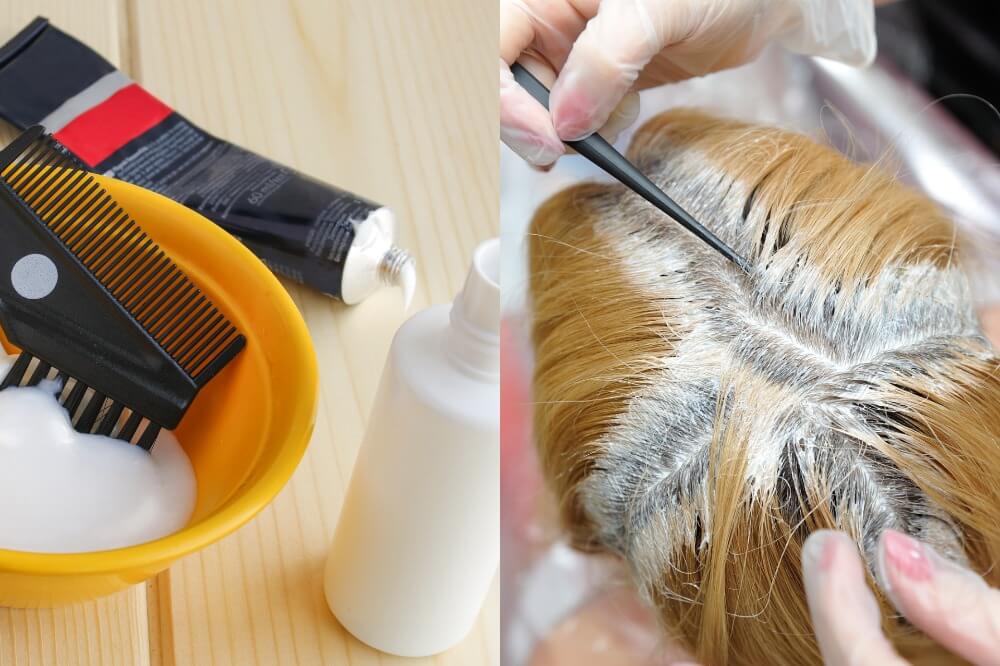
III. How to Bleach Vietnamese Hair Extensions at Home: Step-by-Step Instructions
To achieve the best results when bleaching your Vietnamese hair extensions at home, follow this detailed process carefully:
Step 1: Prep and Detangle Your Extensions
Start by gently detangling the hair using a wide-tooth comb, working from the tips upward to avoid breakage and to ensure the bleach spreads evenly.
- If you’re working with clip-in or tape-in extensions, lay them flat on a towel or plastic-covered surface.
- For weft or sew-in extensions not currently installed, it’s ideal to secure them to a mannequin head or hang them so they remain stable during application.
Step 2: Mix the Bleach
- Put on protective gloves to shield your hands from the chemicals.
- In a plastic (non-metal) bowl, mix the bleach powder and developer as instructed on the product packaging.
- Stir thoroughly until the mixture reaches a smooth, creamy texture—not too thick, not runny.
💡 Pro Tip: If this is your first time bleaching, consider using a 20 or 30 volume developer for gentler lightening and less risk of damage.
⚠️ Important: Avoid using metal bowls or tools when mixing bleach, as metal can react with the chemicals and compromise the effectiveness of the bleach.
Step 3: Apply the Bleach
- Divide your extensions into smaller, manageable sections using plastic clips.
- Begin applying the bleach from the ends upward, as the ends generally require a longer processing time.
- Use an applicator brush for precision and make sure the mixture is applied evenly throughout each section.
If you prefer a more natural, root-fade look, you can leave the top 1–2 inches of the extensions unbleached.
Ensure every strand is fully saturated but not excessively coated—avoid making the hair soggy or dripping.
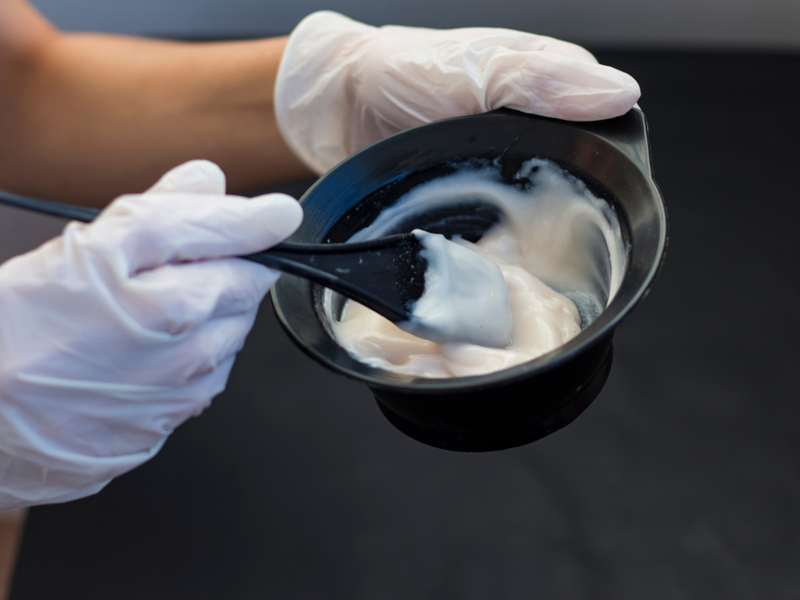
Step 4: Processing Time – Patience Pays Off
When bleaching unprocessed Vietnamese hair extensions, it’s important to note that the natural oils present can slow the bleaching process compared to chemically treated hair. Patience and careful monitoring are essential.
- Check the hair every 10 minutes to observe how the color is developing.
- Processing time typically ranges from 30 to 45 minutes, depending on:
- The original color of your extensions
- Your target level of lightness
- The strength of the developer
- The overall condition of the hair
⚠️ Never exceed the maximum recommended processing time listed on your bleach product’s packaging—even the most resilient Vietnamese hair can suffer irreversible damage if over-processed.
Step 5: Rinsing and Neutralizing
Once you’ve achieved your desired lift, it’s time to rinse and neutralize the hair:
- Rinse thoroughly with lukewarm water until it runs completely clear.
- Apply a purple shampoo to tone down any brassy or yellow hues.
- Rinse again to remove all product residue.
- If necessary, apply a toner to further refine the shade.
- Finish with a deep conditioning treatment to restore moisture and elasticity to the hair.
IV. Toning for the Perfect Finish
Toning is a critical step after bleaching Vietnamese hair extensions. It corrects undertones and helps you achieve a professional, polished color result.
Understanding the Color Wheel
Use the color wheel to determine the right toner based on the undertones you want to neutralize:
- Yellow tones → Purple toner
- Orange tones → Blue toner
- Red tones → Green toner
Choosing the Right Toner
Match your toner to your desired final look:
- Platinum/silver: Violet-based toner
- Beige/sandy blonde: Blue-violet toner
- Warm blonde: Gold-based toner
Apply the toner per the product instructions—usually for 5 to 15 minutes. Monitor closely to avoid over-toning, which could result in unexpected shades.
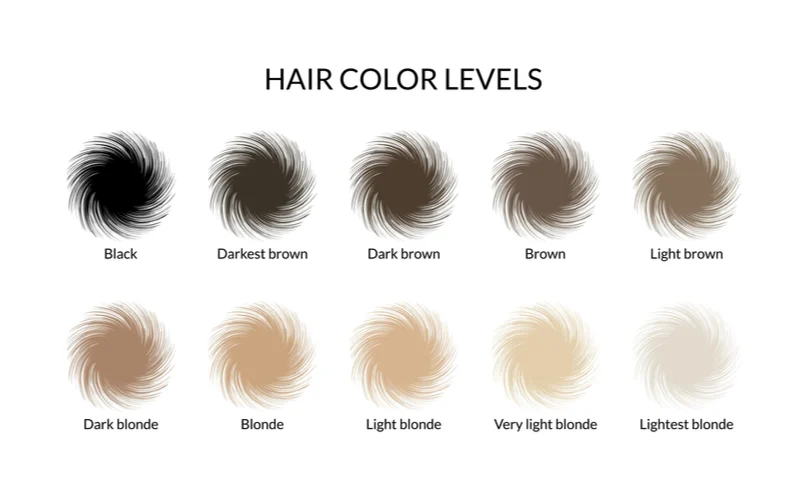
V. Post-Bleach Care: Keeping Your Extensions Healthy
Proper aftercare is essential to maintain the look and longevity of your bleached Vietnamese hair extensions.
1. Immediate Aftercare
- Use a protein-rich mask to repair and strengthen the hair.
- Follow with a deep moisturizing conditioner.
- Allow extensions to air dry fully before styling.
- Always apply a heat protectant if using heat tools.
2. Ongoing Maintenance
- Wash sparingly with sulfate-free, color-safe products
- Use purple shampoo once a week to combat brassiness
- Deep condition regularly to maintain softness
- Apply light hair oils or serums to keep ends hydrated
- Avoid chlorine and saltwater, which can cause discoloration
- Protect hair from UV rays, which may cause yellowing
3. Recommended Products for Bleached Hair
- Shampoo: Sulfate-free formulas for colored hair
- Conditioner: Moisture-rich options with argan oil or keratin
- Treatment: Weekly bond-building masks
- Styling: Lightweight, alcohol-free products
VI. Conclusion: Unlocking the Potential of Vietnamese Hair Extensions
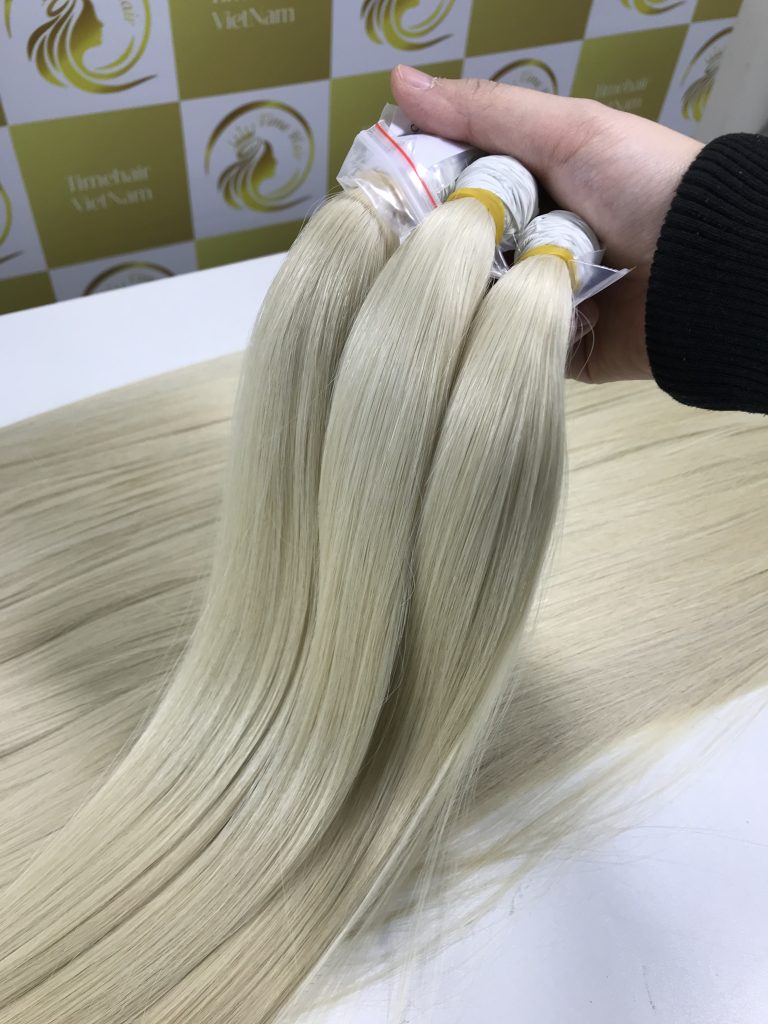
Bleaching Vietnamese hair extensions at home is a powerful way to express your style while enjoying the superior quality of this hair type. Whether you’re after subtle highlights or a bold platinum transformation, Vietnamese hair provides the strength, shine, and versatility needed for stunning results.
By following each step with care—and committing to regular maintenance—you’ll enjoy vibrant, long-lasting color with healthy, beautiful extensions.
For top-tier Vietnamese hair extensions, visit TimeHair Vietnam – the first verified Vietnamese hair company on Alibaba. Our premium, ethically sourced extensions are trusted by stylists and customers worldwide.
VII. Ready to Transform Your Look?
If you’re inspired to start your bleaching journey or prefer pre-colored extensions, explore our full range at TimeHair Vietnam. We offer the finest Vietnamese hair available, ready to support your color dreams.
✨ Quality extensions are the foundation of any successful bleach and tone – and that’s exactly what we deliver.




